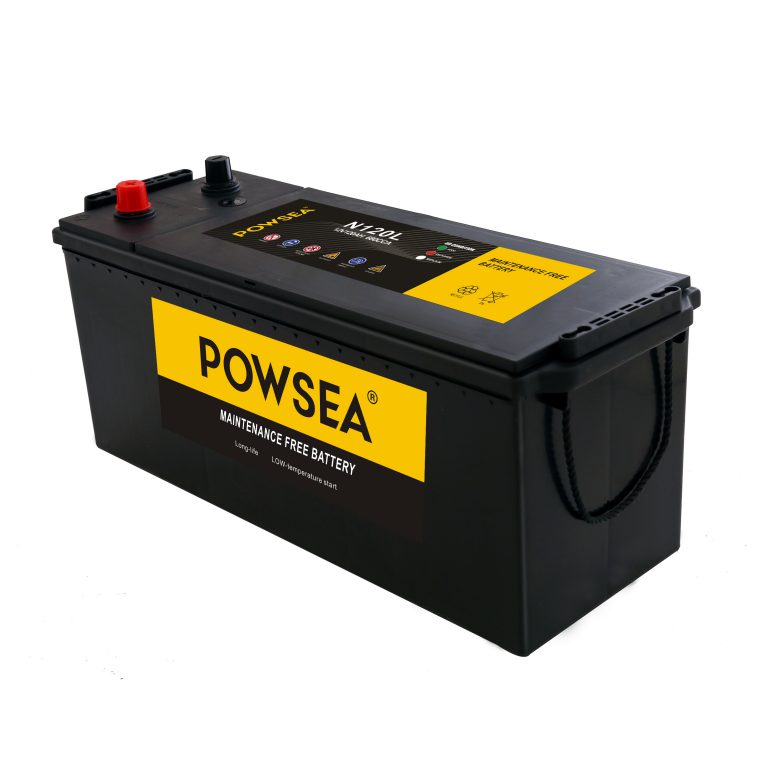Lead Acid Battery SDS: Everything You Need to Know
When handling 12V lead-acid batteries, understanding the Lead Acid Battery SDS (Safety Data Sheet) is crucial for safety, compliance, and proper handling. This document provides comprehensive information on chemical properties, health risks, environmental impact, and emergency measures. In this blog, we’ll break down the key sections of an SDS, explain their significance, and provide real-world examples.
What is a Lead Acid Battery SDS?
The Safety Data Sheet (SDS) for a lead-acid battery is a document required by OSHA’s Hazard Communication Standard (HCS) and GHS (Globally Harmonized System of Classification and Labeling of Chemicals). It contains essential safety information for workers, emergency responders, and consumers. SDSs have replaced the older Material Safety Data Sheets (MSDS) format.
A typical Lead Acid Battery SDS includes 16 sections. Below, we’ll explore each section in detail.
16 Sections of a Lead Acid Battery SDS
1. Identification
- Purpose: Identifies the product, manufacturer, and emergency contact.
- Example: A 12V lead-acid car battery might be listed as “Lead Acid Battery, Wet, Filled with Acid.”
- Why It Matters: In case of an accident or emergency, responders need quick access to product details.
2. Hazard(s) Identification
- Purpose: Describes the physical and health hazards.
- Key Hazards:
- Sulfuric Acid – Corrosive, causes burns.
- Lead – Toxic, can cause neurological damage.
- Explosion Risk – Hydrogen gas emitted during charging can ignite.
- Case Study: OSHA reports cases of severe chemical burns from improperly handled lead-acid batteries.
3. Composition/Information on Ingredients
| Component | Percentage | Hazard Classification |
|---|---|---|
| Lead (Pb) | ~60-70% | Toxic, environmental hazard |
| Lead Dioxide (PbO₂) | ~20-30% | Toxic |
| Sulfuric Acid (H₂SO₄) | ~10-20% | Corrosive |
| Polypropylene Case | Varies | Non-hazardous |
- Why It Matters: Knowing the chemical makeup helps in handling and disposal.
4. First-Aid Measures
| Exposure Type | Symptoms | First Aid Response |
|---|---|---|
| Inhalation | Difficulty breathing | Move to fresh air, seek medical help |
| Skin Contact | Burns, irritation | Wash with water for 15 min |
| Eye Contact | Severe irritation, possible blindness | Flush with water for 15 min, seek immediate medical help |
| Ingestion | Internal burns, poisoning | Do NOT induce vomiting, seek medical attention |
- Example: A worker spilled sulfuric acid on their skin—quick washing prevented serious injury.
5. Fire-Fighting Measures
- Fire Risk: Hydrogen gas accumulation can explode.
- Extinguishing Media: Use CO₂, foam, or dry chemical (DO NOT use water).
- Firefighter Precautions: Wear full protective gear.
- Real Incident: A battery explosion in a warehouse injured two workers due to hydrogen gas ignition.
6. Accidental Release Measures
- Small Spill: Neutralize with baking soda, then clean.
- Large Spill: Use acid-resistant PPE, contain with sand.
- Environmental Protection: Prevent lead contamination in water sources.
7. Handling and Storage
Handling: Avoid dropping batteries, wear gloves.
Storage:
- Keep upright to prevent acid leaks.
- Ventilate area to prevent hydrogen gas buildup.
Example: A trucking company improperly stored batteries in a sealed container, leading to a fire due to hydrogen accumulation.
8. Exposure Controls/Personal Protection
- Protective Equipment:
- Gloves & Goggles – Prevent acid burns.
- Respirators – Needed in poor-ventilation areas.
- Exposure Limits:
- OSHA Lead Limit: 50 µg/m³
- Sulfuric Acid Limit: 1 mg/m³
9. Physical and Chemical Properties
| Property | Value |
|---|---|
| Boiling Point | ~337°C (Sulfuric Acid) |
| pH | <1 (Highly acidic) |
| Density | ~1.2-1.3 g/cm³ |
| Hydrogen Gas Emission | Yes, during charging |
10. Stability and Reactivity
Stable? Yes, under normal conditions.
Incompatible With:
- Metals (can cause hydrogen gas release).
- Alkaline materials (violent reaction).
Example: Mixing sulfuric acid with bleach releases toxic chlorine gas.
11. Toxicological Information
- Lead Poisoning: Can cause kidney damage, neurological issues, reproductive harm.
- Sulfuric Acid Exposure: Severe burns, lung irritation.
- Long-Term Risks:
- Workers in battery plants have a higher risk of lead exposure illnesses.
12. Ecological Information
Toxic to Aquatic Life: Lead is a long-term environmental hazard.
Soil Contamination: Acid leaks lower pH, harming plant life.
Case Study: An EPA report found elevated lead levels in soil near improperly discarded batteries.
13. Disposal Considerations
- Never discard in regular trash.
- Recycling Required: 98% of a lead-acid battery is recyclable.
- Regulations: Follow EPA hazardous waste rules.
14. Transport Information
| Classification | Details |
|---|---|
| DOT (US) | Class 8 (Corrosive) |
| UN Number | 2794 |
| Packing Group | III |
- Packaging Rules:
- Use non-conductive containers.
- Label with “Battery, Wet, Filled with Acid”.
15. Regulatory Information
- OSHA: Lead is regulated under 29 CFR 1910.1025.
- EPA: Batteries classified as hazardous waste.
- EU RoHS: Restrictions on lead content.
16. Other Information
- Updated SDS required every 3-5 years.
- Manufacturers must provide SDS to buyers.
Final Thoughts: Why SDS Matters
Understanding the Lead Acid Battery SDS is essential for:
✅ Workplace safety – Prevents accidents.
✅ Legal compliance – Avoids fines.
✅ Environmental protection – Reduces pollution.
If you handle or transport 12V lead-acid batteries, always review the SDS and follow safety protocols. For more guidance, consult OSHA, EPA, or battery manufacturers’ SDS documents.
🔍 Need an SDS for your battery? Check the manufacturer’s website or regulatory databases.
FAQs
1. What is an SDS for a lead acid battery?
A Safety Data Sheet (SDS) is a document that provides safety information about a lead acid battery, including its composition, hazards, handling precautions, and emergency procedures. It helps workers, transporters, and emergency responders safely handle and dispose of batteries.
2. Why is an SDS required for lead acid batteries?
SDS is required by OSHA’s Hazard Communication Standard (HCS 2012) and the Globally Harmonized System (GHS) to ensure safe handling, storage, and transportation of hazardous materials like sulfuric acid and lead.
3. What are the main hazards of a lead acid battery listed in the SDS?
- Chemical Hazards: Sulfuric acid is highly corrosive and can cause severe burns.
- Health Hazards: Lead exposure can cause poisoning, neurological damage, and reproductive issues.
- Physical Hazards: During charging, the battery emits hydrogen gas, which can explode if ignited.
4. Where can I find the SDS for a lead acid battery?
You can obtain an SDS from:
- The battery manufacturer’s website.
- Your supplier or distributor.
- OSHA or EPA safety databases.
- The battery packaging or product documentation.
5. What should I do if battery acid spills?
- Wear protective gloves and goggles.
- Neutralize with baking soda (sodium bicarbonate).
- Absorb with sand or an absorbent material.
- Dispose of properly following hazardous waste guidelines.
6. Can I dispose of a lead acid battery in the trash?
No! Lead acid batteries are hazardous waste and must be recycled properly. In most countries, it’s illegal to dispose of them in landfills. Contact a battery recycling facility or an authorized waste handler.
7. How should lead acid batteries be stored safely?
- Store upright to prevent acid leaks.
- Keep in a well-ventilated area to prevent hydrogen gas buildup.
- Avoid exposure to extreme heat or flames.
- Use non-conductive pallets or trays to prevent short circuits.
8. What protective equipment should be used when handling lead acid batteries?
- Gloves (acid-resistant).
- Safety goggles or face shield.
- Apron or protective clothing.
- Respirator (if working in areas with lead dust or acid fumes).
9. Are lead acid batteries classified as hazardous for shipping?
Yes. Lead acid batteries are classified under UN 2794, Class 8 (Corrosive Material). They require proper labeling and packaging according to DOT (U.S.), IATA (air), and IMDG (sea) regulations.
10. How often should the SDS be updated?
Manufacturers are required to update the SDS whenever there is new hazard information or at least every 3-5 years, depending on local regulations. Always check for the latest version before handling batteries.

















